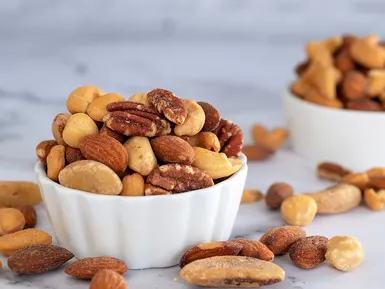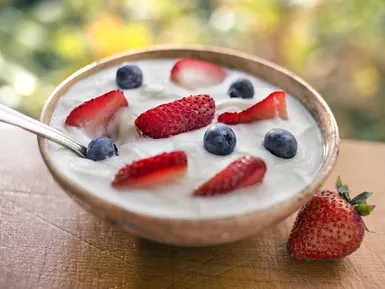
Introduction
Maintaining healthy habits for long - term weight loss is a complex journey that involves both physiological and psychological aspects. In this blog post, we will delve deep into the principles behind it and provide you with unique strategies to help you achieve your weight loss goals in a sustainable way.
Physiological Principles of Weight Loss
Energy Balance
The foundation of weight loss lies in energy balance. According to the NIH's Body Weight Planner, to lose weight, you need to create a calorie deficit, which means burning more calories than you consume. However, it's not as simple as just cutting calories blindly. The type of calories also matters. For example, a diet rich in whole grains, lean proteins, and healthy fats can keep you satiated for longer compared to a diet high in processed foods and simple sugars.
Hormone Regulation
Hormones play a crucial role in weight management. Insulin, for instance, is a hormone that regulates blood sugar levels. When you consume a large amount of simple carbohydrates, your blood sugar spikes, leading to an increase in insulin secretion. This can cause your body to store more fat. On the other hand, a balanced diet with complex carbohydrates, protein, and healthy fats can help regulate insulin levels more effectively. Leptin, known as the "satiety hormone," signals to your brain when you are full. However, in some cases of chronic overeating or obesity, the body can become resistant to leptin, making it harder to feel full.
Metabolic Adaptation
As you lose weight, your metabolism can slow down as a natural response to the reduced calorie intake. This is known as metabolic adaptation. To counteract this, it's important to include strength training in your weight loss routine. According to the American College of Sports Medicine (ACSM), building muscle through strength training can increase your basal metabolic rate, which means you burn more calories at rest.
Psychological Principles of Weight Loss
###饮食行为 Our eating behaviors are deeply ingrained and often influenced by our environment, emotions, and social factors. For example, many people tend to eat more when they are bored or stressed. Understanding your eating triggers is the first step in changing these behaviors. Keeping a food diary can be a useful tool to identify patterns in your eating habits, such as when and why you overeat.
Emotional Eating
Emotional eating is a common challenge in weight loss. When we are sad, happy, or anxious, we may turn to food for comfort. Instead of reaching for food when emotions strike, try alternative coping mechanisms like going for a walk, practicing deep breathing, or engaging in a hobby.
Unique Insights for Weight Loss
Tailoring Strategies to Metabolic Types
Not everyone has the same metabolism. Some people have a slow metabolism, while others have a fast one. For those with a slow metabolism, a more aggressive calorie - cutting approach may not be the best option. Instead, focusing on increasing physical activity and choosing nutrient - dense foods that are easier to metabolize can be more effective. For example, consuming more green leafy vegetables, which are low in calories but high in fiber and nutrients, can help boost metabolism.
Breaking Through Weight Loss Plateaus
Weight loss plateaus are common and can be frustrating. One scientific method to break through a plateau is to change your exercise routine. If you've been doing mostly cardio, try adding strength training or vice versa. Another approach is to adjust your calorie intake slightly. For example, if you've been consistently eating 1200 calories a day, try increasing it to 1300 calories for a few days and then back down to 1200 calories. This can "shock" your metabolism and start the weight loss process again.
The Importance of Non - Scale Victories
Focusing solely on the number on the scale can be demotivating. Non - scale victories, such as improved energy levels, better sleep, and increased strength, are just as important. For example, if you notice that you can now walk up a flight of stairs without getting out of breath or that you wake up feeling more refreshed in the morning, these are signs that your body is becoming healthier, even if the scale hasn't moved much.
Expertise and Authoritativeness
According to The Obesity Society, a healthy rate of weight loss is 1 - 2 pounds per week. This is a sustainable rate that allows your body to adjust to the changes. Additionally, the Academy of Nutrition and Dietetics recommends a balanced diet that includes a variety of foods from all the major food groups. For example, a diet rich in fruits, vegetables, whole grains, lean proteins, and low - fat dairy products can provide all the necessary nutrients while keeping calorie intake in check.
Experience
A Sample One - Day Weight Loss Meal Plan
- Breakfast: A bowl of oatmeal with berries (strawberries, blueberries) and a tablespoon of chia seeds. This meal is high in fiber and antioxidants. The oatmeal provides complex carbohydrates for energy, and the berries add a natural sweetness. Calories: approximately 300 calories. Macronutrients: 50% carbohydrates, 10% protein, 40% healthy fats (from chia seeds).
- Lunch: Grilled chicken salad with mixed greens, cucumbers, tomatoes, and a light vinaigrette dressing. The grilled chicken is a great source of lean protein, and the vegetables are low in calories and high in fiber. Calories: approximately 350 calories. Macronutrients: 40% carbohydrates, 40% protein, 20% healthy fats.
- Dinner: Baked salmon with steamed broccoli and quinoa. Salmon is rich in omega - 3 fatty acids, which are beneficial for heart health. The broccoli is a nutrient - dense vegetable, and the quinoa is a good source of protein and complex carbohydrates. Calories: approximately 450 calories. Macronutrients: 30% carbohydrates, 40% protein, 30% healthy fats.
A Beginner's Guide to Fat - Burning Exercises
- Brisk Walking: Start with 30 minutes of brisk walking every day. It's a low - impact exercise that can get your heart rate up and start burning calories.
- Bodyweight Squats: Do 3 sets of 10 - 15 bodyweight squats. This exercise works your lower body muscles, including your quadriceps, hamstrings, and glutes, and can help increase your metabolism.
- Yoga: Incorporate a 20 - minute yoga session a few times a week. Yoga not only helps with flexibility and balance but also reduces stress, which can be a factor in weight gain.
Trustworthiness
It's important to note that extreme or fad diets are not a sustainable way to lose weight. These diets often promise quick results but can be harmful to your health in the long run. For example, crash diets that severely restrict calories can lead to muscle loss, nutrient deficiencies, and a slower metabolism. Instead, focus on making small, sustainable changes to your diet and lifestyle.
Challenges in Weight Loss and How to Overcome Them
- Hunger: When you're trying to lose weight, you may feel hungry more often. To combat this, eat foods that are high in fiber and protein, as they can keep you feeling full for longer. Also, make sure to drink plenty of water, as thirst can sometimes be mistaken for hunger.
- Lack of Motivation: Weight loss is a long - term journey, and it's normal to have days when you lack motivation. Set small, achievable goals for yourself and celebrate your progress along the way. Surround yourself with supportive people who can encourage you when you're feeling down.
Food Selection List
- Lean Proteins: Chicken breast, turkey, fish (salmon, tuna, tilapia), tofu, and low - fat dairy products.
- Complex Carbohydrates: Brown rice, quinoa, whole wheat bread, oats, and sweet potatoes.
- Healthy Fats: Avocado, nuts (almonds, walnuts in moderation), seeds (chia seeds, flaxseeds), and olive oil.
- Fruits and Vegetables: All types of fruits and vegetables, especially leafy greens, berries, cruciferous vegetables (broccoli, cauliflower), and citrus fruits.
FAQ
How can I lose 10 pounds in a healthy way?
To lose 10 pounds in a healthy way, aim for a calorie deficit of 500 - 1000 calories per day. This can be achieved through a combination of diet and exercise. Follow a balanced diet as described above and engage in regular physical activity, such as 30 minutes of cardio and 2 - 3 strength training sessions per week.
What should I do if I'm hungry during my weight loss journey?
If you're hungry, first make sure you're drinking enough water. Then, choose foods that are high in fiber and protein, such as a piece of fruit with a tablespoon of nut butter or a small serving of Greek yogurt with berries.
How often should I exercise to lose weight?
For weight loss, it's recommended to do at least 150 minutes of moderate - intensity aerobic exercise, such as brisk walking or cycling, per week. Additionally, include 2 - 3 strength training sessions per week to build muscle and increase your metabolism.
Call to Action
This week, start by making a small change to your diet. Try replacing high - calorie condiments with natural spices. For example, instead of using mayonnaise on your sandwich, use mustard or a sprinkle of paprika. This simple change can add flavor to your food without adding a lot of calories and is a great first step in your healthy weight loss journey.

5 Transformative Weight-Loss Resolutions for Success

Workout Routines & Beyond: Science-Based Weight Loss

Vitamin E and Weight Loss: Unveiling the Truth

Effective Strategies to Lose Midriff Fat for Women

8 Non-Scale Victories in Your Weight-Loss Journey

Unveiling the Ornish Diet: A Path to Sustainable Weight Loss

The Power of Social Support in Weight Loss

Personalized Weight Loss: 4 Strategies for Success

Long - Term Weight Loss: Maintaining Healthy Habits

